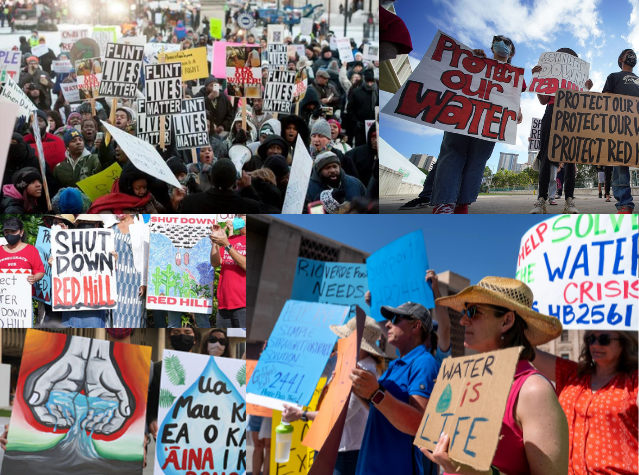Going Beyond the Surface
Imagine a Day Without Water is an annual campaign that encourages us to reflect on the critical role clean and available water plays in our lives. Unfortunately, for many communities across America, imagining life without water is not a hypothetical scenario but a grim reality. This week, Flume took a journey through some of these affected areas to bring awareness and shed light on the critical state of our water resources.
Red Hill, Oahu
In late 2021, Honolulu’s main drinking aquifers faced a catastrophic event when the Red Hill fuel storage facility leaked a staggering 19,000 gallons of petroleum. Over 93,000 people found their drinking water tainted, leading to a slew of health complaints ranging from nausea to chemical burns. This disaster didn’t just shed light on the fragility of our water resources but also ignited a community’s will to take legal action and advocate for the protection of this life-sustaining resource.
Following the leak, a multifaceted recovery effort went underway, involving switching to a cleaner water source, replacing lead pipes, enhancing water treatment, providing healthcare and education resources, engaging the community, seeking legal compensation, and addressing environmental concerns. The process includes ongoing lead pipe replacement, improved water treatment, and health monitoring to ensure water safety. Community engagement has been vital in holding agencies accountable, and government funding supports infrastructure improvements. This complex recovery process underscores the importance of water infrastructure and public health measures for ensuring safe and clean drinking water to prevent future crises.
Rio Verde Foothills, Arizona
Rio Verde Foothills is an unincorporated community right outside of Scottsdale. For years, residents have hauled their potable and non-potable water from Scottsdale with permission from the city. However, in early 2023, the city cut off water access to the 2400+ residents of Rio Verde. The situation became increasingly dire as the community found themselves without a dependable water source. Local wells proved unreliable, and the nearest standpipes required long, arduous drives to access.
In a community where water is a fundamental necessity, this crisis forced residents to adapt in extreme ways. Leigh Harris-Avril and her husband, for instance, resorted to harvesting rainwater and collecting water in Gatorade bottles at the homes of friends just to meet their basic needs. However, it was clear that without a solution, the future for Rio Verde Foothills looked bleak.
Luckily, board members are nailing down the final details of a possible deal with the city while negotiating with EPCOR, the private utility that has proposed to serve residents for the long haul, to provide that temporary water. EPCOR had previously acquired the utility responsible for serving the Rio Verde area, a nearby community separate from Rio Verde Foothills. They were already in the process of negotiating an updated agreement to maintain the extraction of water from their wells, which has an impact on the flow of the Verde River, an area supervised by SRP. This extended agreement would grant EPCOR the authorization to utilize water from these wells or other sources to cater to the residents of Rio Verde Foothills.
Flint, Michigan
One of the most well-known water catastrophes in modern history is the Flint water crisis. In 2014, the drinking water source for Flint, Michigan was switched from the Detroit Water and Sewerage Department to the Flint River. Unfortunately, because the river water was not properly treated, lead from aging pipes severely contaminated the city’s drinking water. The subsequent health and environmental fallout was profound, drawing attention from across the globe.
The recovery efforts in Flint, Michigan, included switching the water source back to Lake Huron, replacing lead service lines, improving water treatment to prevent lead contamination, providing healthcare and education resources, legal actions for compensation, community engagement, and long-term planning for infrastructure and public health. While progress has been made, challenges continue as the city works to ensure clean, safe water and address the ongoing needs of residents affected by the crisis. The Flint water crisis wasn’t just about water – it spotlighted deeper issues of infrastructure, environmental justice, and governmental responsibility.
Thank You for Joining Us!
Our week-long journey through these communities reiterates a simple, yet profound truth: water is not just a utility or amenity, but the very essence of life. It’s imperative for us to recognize its value, protect our resources, and ensure that every individual has access to clean, safe water. We hope you took some time this week to appreciate water and the incredible role it plays in our lives. Thank you for joining us on this journey, and hope it serves as a reminder of the indispensable role water plays in our existence.



